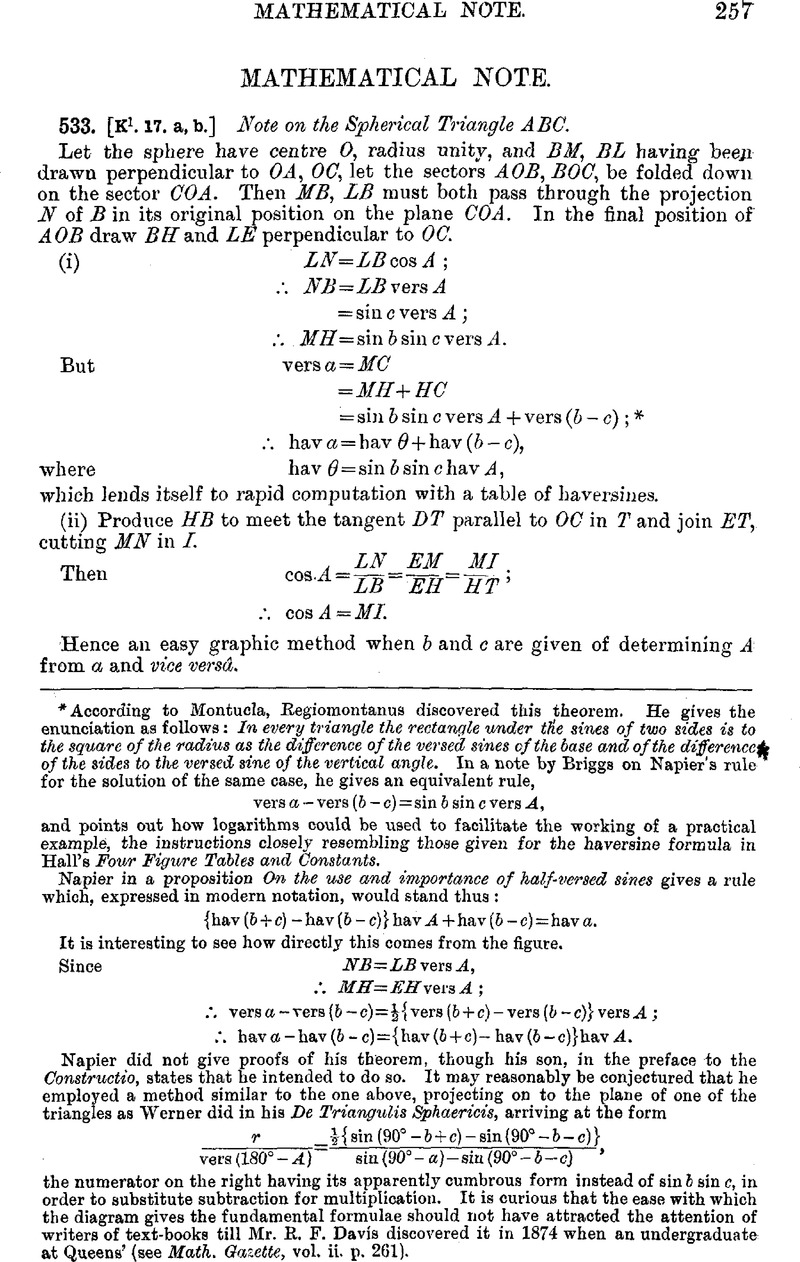No CrossRef data available.
Article contents
533. [K1.17. a, b.] Note on the Spherical Triangle ABC.
Published online by Cambridge University Press: 03 November 2016
Abstract

Information
- Type
- Mathematical Note
- Information
- Copyright
- Copyright © Mathematical Association 1918
References
page 257 note * According to Montucla, Kegiomontanus discovered this theorem. He gives the enunciation as follows : In every triangle the rectangle under tlie sines of tino sides is to the square of the radius as the difference of the versed sines of the base and of the difference of the sides to the versed sine of the vertical angle. In a note by Briggs on Napier’s rule for the solution of the same case, he gives an equivalent rule,
vers a - vers (b - c) =sin b sin c vers A,
and points out how logarithms could be used to facilitate the working of a practical example, the instructions closely resembling those given for the haversine formula in Hall’s Four Figure Tables and Constants.
Napier in a proposition On the use and importance of half-versed sines gives a rule which, expressed in modern notation, would stand thus :
{hav (b + c) - hav (b-c)} hav A + hav (b - c) = hav α.
It is interesting to see how directly this comes from the figure.
NB=LB vers A,
∴MH=EH vers A;
∴ vers α - vers (b - c) = ½{vers (b + c)- vers (b - c)} vers A;
∴ hav α - hav (b - c) = {hav (b + c)- hav(b-c)}hav A.
Napier did not give proofs of his theorem, though his son, in the preface to the Constructio, states that he intended to do so. It may reasonably be conjectured that he employed a method similar to the one above, projecting on to the plane of one of the triangles as Werner did in his De Triangulis Sphaericis, arriving at the form
![]()
the numerator on the right having its apparently cumbrous form instead of sin b sin c, in order to substitute subtraction for multiplication. It is curious that the ease with which the diagram gives the fundamental formulae should not have attracted the attention of writers of text-books till Mr. R. F. Davis discovered it in 1874 when an undergraduate at Queens’ (see Math. Gazette, vol. ii. p. 261).

